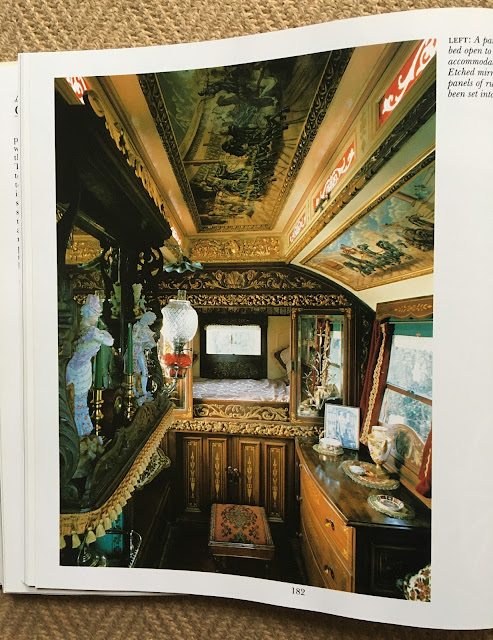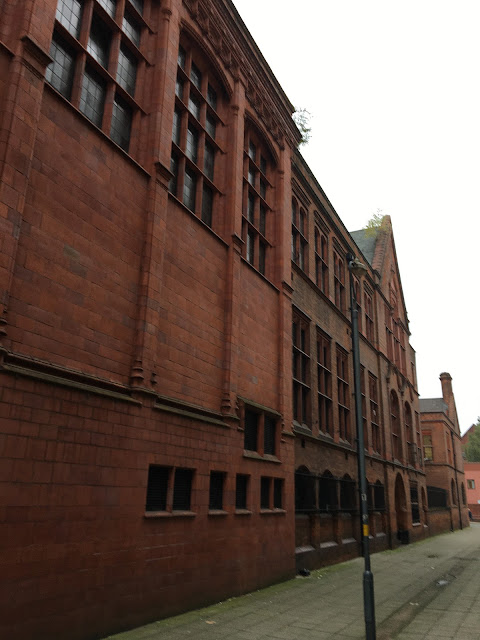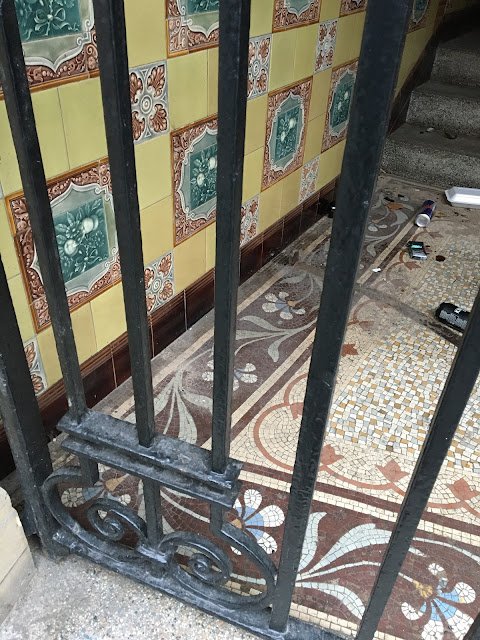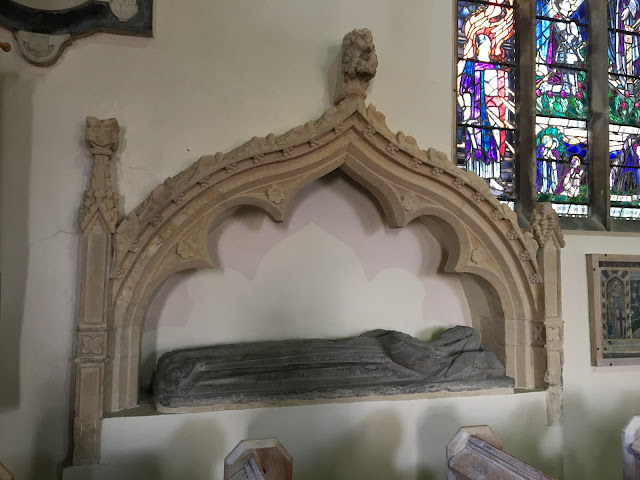Saturday, 30 November 2024
'English Style'
Friday, 22 November 2024
Birmingham
Our visit timed with the partial re-opening of the City Museum and Art Gallery. It was good to be back, BUT I think we all felt that it had been ideologically captured and that we preferred it as it had been. Afterwards we popped into the Art College and the Midland Institute: the former band box smart, the letter somewhat tired.
I wanted a second look at that fascinating building, the Victoria Law Courts (Aston Webb & Ingress Bell, 1887-91) - particularly the side and rear facades. Considerable more utilitarian than the main façade they are handled with consummate skill; the rear façade is an object lesson how to design a building on a hillside. I think the Newton St façade is by another, later architect - severe when compared to the other parts of the building, but done in a good, sturdy yeoman Arts and Crafts manner with good detailing; the roof is marvellous with dormer windows and graded slates. In all a building I rather like, but in a sense it is a failure in the same way that G E Street's Royal Courts of Justice are; neither of them have quiet enough heft. One feels that a 19th century French architect trained in the Beaux Arts tradition (for all its faults) would instinctively know how to handle the situation. The courts just seem more suited to a County town than a great city like Birmingham.
Wednesday, 20 November 2024
St Edmund, King & Martyr
Exult, O Holy church of the English nation; behold unto thee is given to praise Edmund, the illustrious king and most invincible martyr, who, triumphing over the prince of this world, most victoriously ascended unto Heaven.
Today is the feast day of St Edmund, King of East Anglia, martyred this day in c869 AD. I'm not quite sure where the text quoted above comes from, but I think it may be from a Sarum Antiphoner. In the Middle Ages Edmund was one of those saints, along with St George and St Gregory the Great, associated with the realm of England. His cult was deeply popular; there are some 78 churches dedicated to him in England with, unsurprisingly, the majority being in East Anglia and Essex. He is also depicted on the Wilton Diptych. Apparently (according to wiki) it wasn't until the Tudor period that St George became the sole patron Saint of the nation.
Sunday, 17 November 2024
'L'Armée des Ombres'
'Tragedy is the immediacy of death you get in the underworld and or at a peculiar time such as war. The characters of 'L'Armée des Ombres' are tragic characters; you know it from the very beginning.'
Following my review of Jean-Pierre Melville's film 'Le Cercle Rouge' it may come as no surprise to find out that I have begun working my way through his work. Yesterday I watched 'L'Armée des Ombres' of 1969. And what a profoundly moving cinematic experience it was, so much so that in the middle of the night I feel compelled to put down my thoughts in this brief review. It isn't hyperbole to say I don't think I've encountered a film of such artistic and emotional heft in quite a while and I'm not at all ashamed to add that at the end I was in tears.
I won't spoil the ending except to say that something occurs that is quite exceptional in film making. I really cannot recommend this film highly enough.
L'Armee des Ombres
1969
Cinematogrpahy Pierre Lhomme
Producer Robert Dorffmann
Saturday, 16 November 2024
St Mary the Virgin, Tenby
A welcome return to Tenby. A glorious day full of sunshine, and serenity. The ancient streets of the tightly-packed town centre had a sense of all pervading calm, rather like a cathedral close or an Oxbridge college.
St Mary's church sits at the centre of the old town, on what is likely to be an ancient site. It is mainly a Late Medieval structure - a rebuilding and enlarging of the original of which only the tower, tall and gaunt, really survives. Its stands, unusually on the s side of the chancel. The equally gaunt spire, based on that in Bridgewater, Somerset, is Late Medieval. St Mary's is a large church for Medieval Wales, built with mercantile wealth. Rubble masonry w Bath Stone (?) details. Apart from tower, Perpendicular Gothic throughout. Nave and aisles and very long chancel with n chapel (St Nicholas/Aisle of the grace of the Holy Rood), and tower and large chapel to the s (St Thomas, tho' the Inventory of the Ancient Monuments of Wales (1911) calls it 'St Anne's chapel'). Porches to s & n of nave. N porch Victorian. Large, cruciform w porch demolished in 1817. Ruins of former College of Priests to w of church.
The chancel has a tiny clearstory, somehow squeezed between wall and wagon roof. The latter is quite the design with a series of large figures of angels along the base. High Altar raised high on steps; below is the crypt chapel of Jesus. The n & s chancel chapels are trapezoid in shape, tapering to the east - Aisle of the Grace of the Holy Rood noticeably so. Both have wagon roofs which have been repainted.
Geraldus Cambrensis, Gerald of Wales, scholar and writer, was rector here in the early 13th century.
Tuesday, 12 November 2024
Own work: The Banqueting House, Studley Royal
So, The Banqueting House at Studley Royal, in N Yorkshire, that remarkable water garden that also includes the ruined Fountains Abbey within its purlieus. I have been to the Abbey, as a teenager, but not the garden. The Banqueting House is thought to be a design by Colen Campbell, built by the mason Thomas Buck between 1728 and 1732. Rather Baroque, all things considered. Mixed media, 56 x 36 cms on 300gsm watercolour paper.
Sunday, 10 November 2024
'Le Cercle Rouge'
Le Cercle Rouge
1970
Cinematogrpahy Henri Decaë
Producer Robert Dorffmann
















































